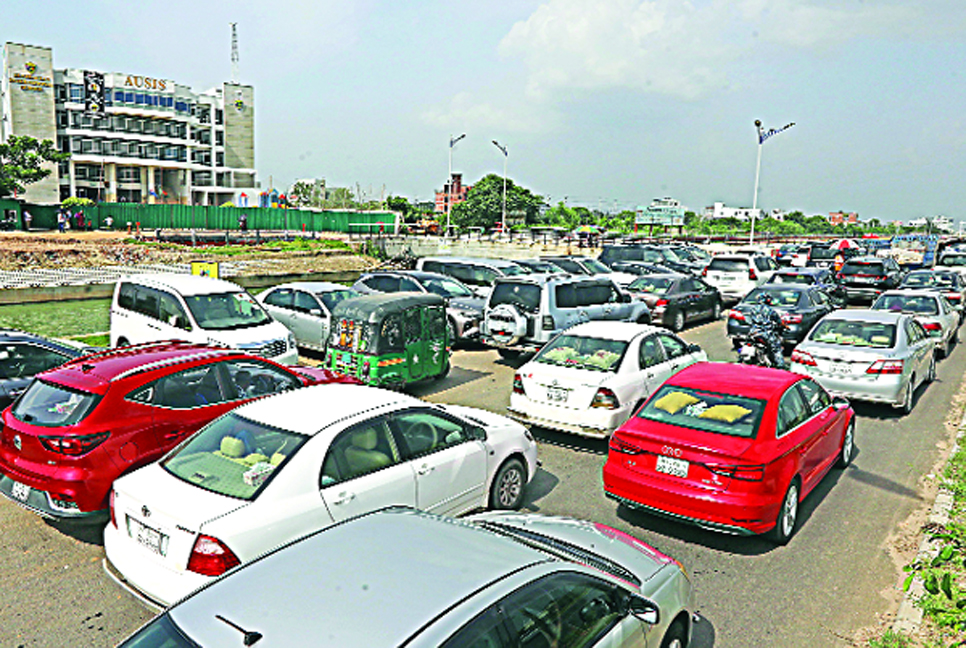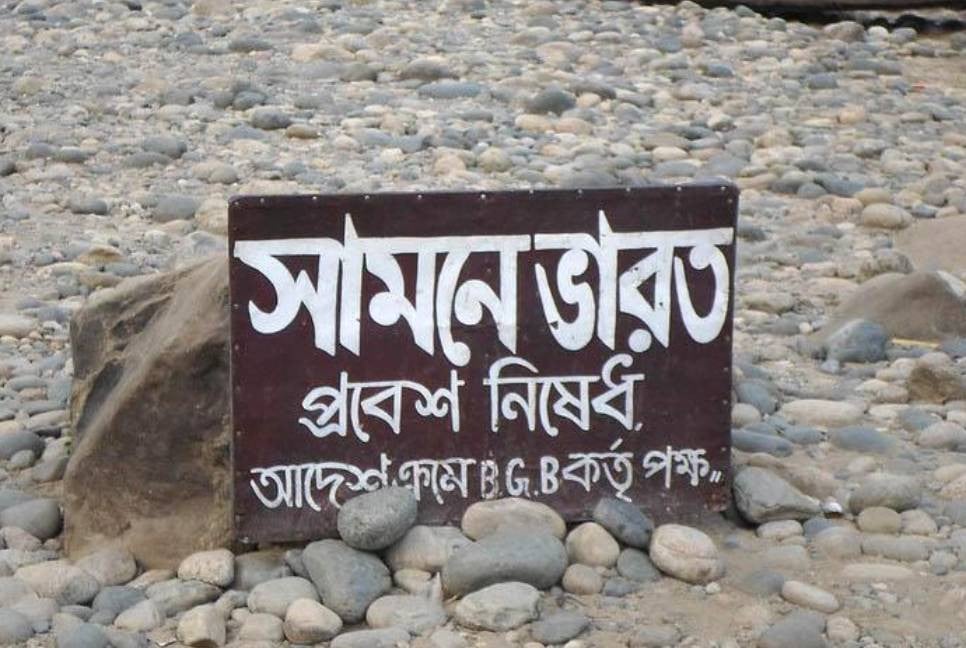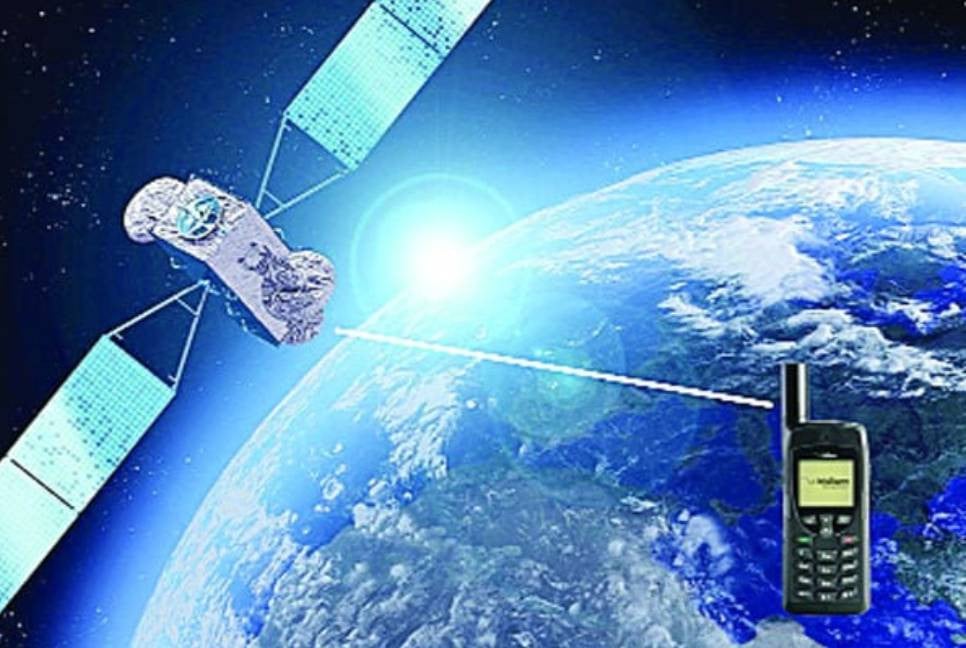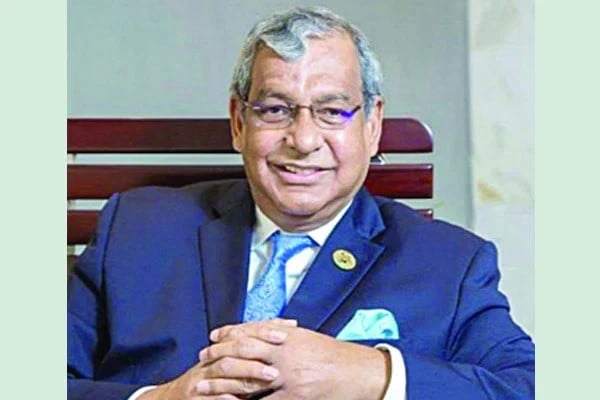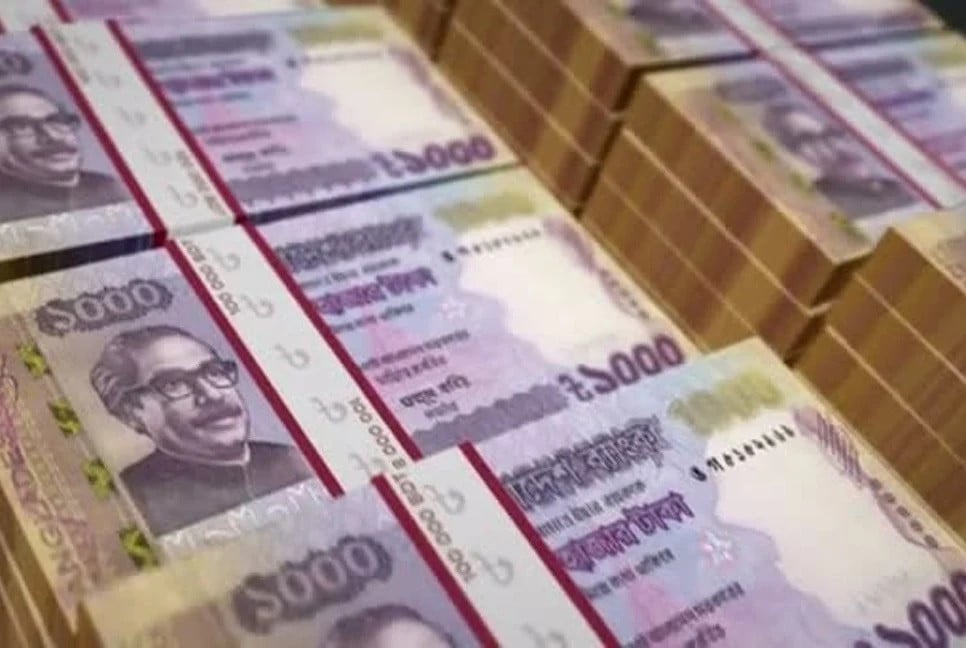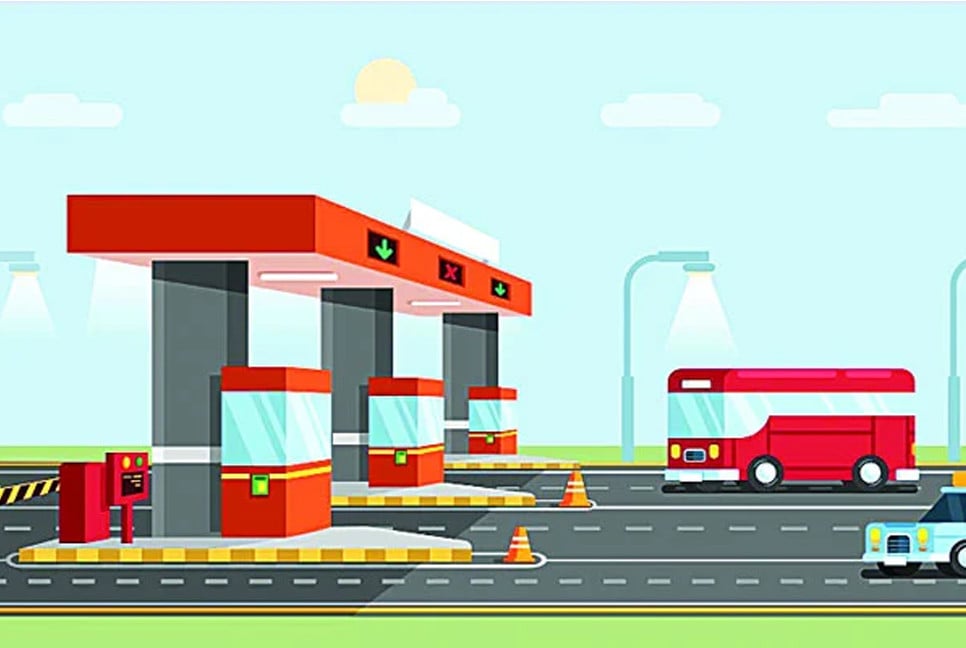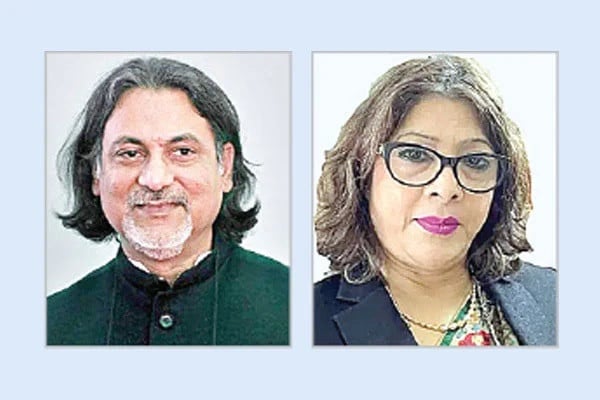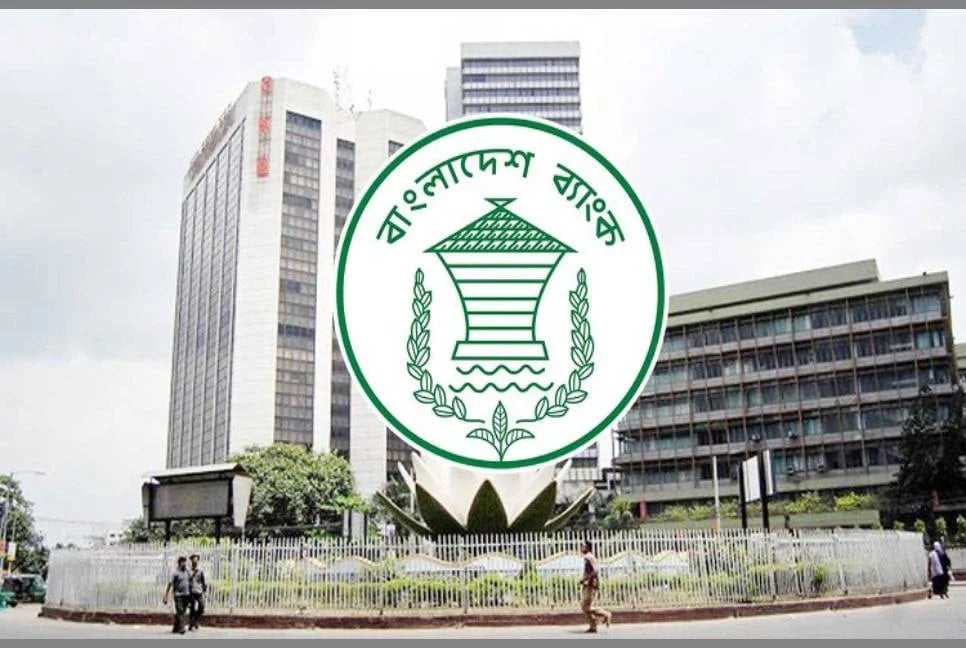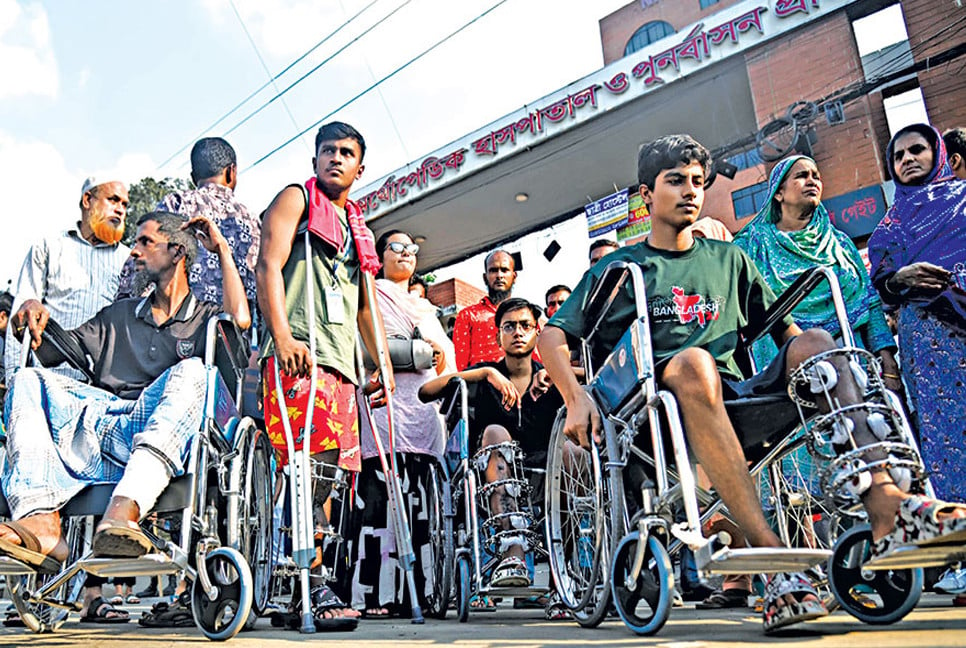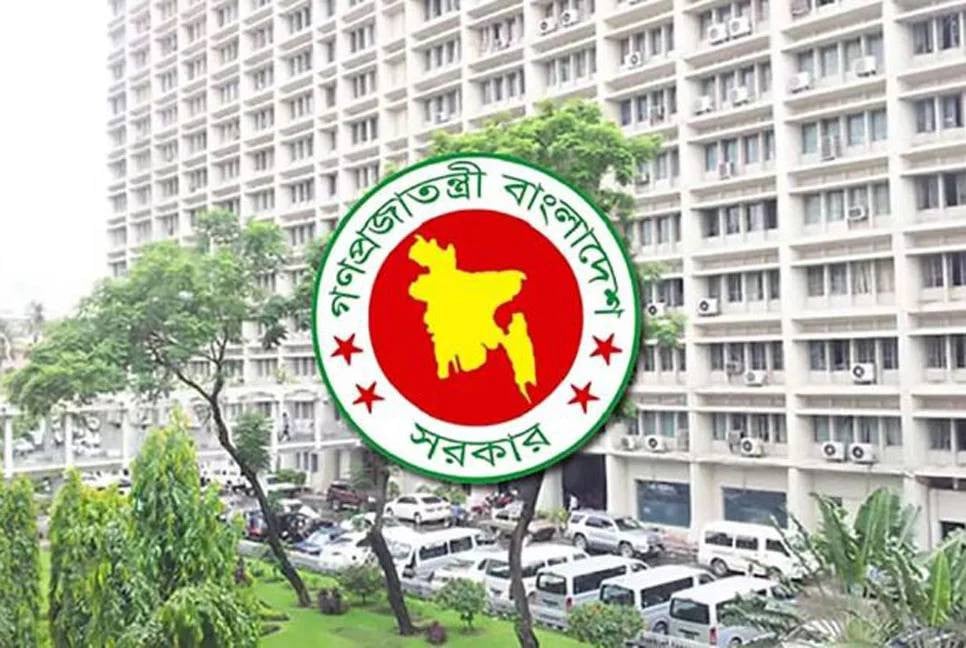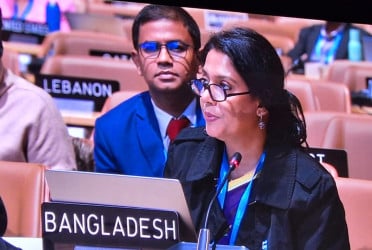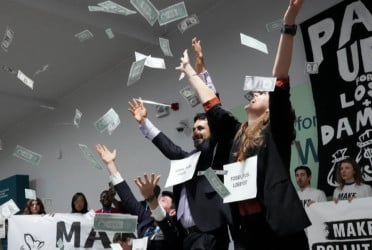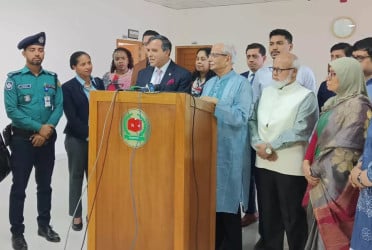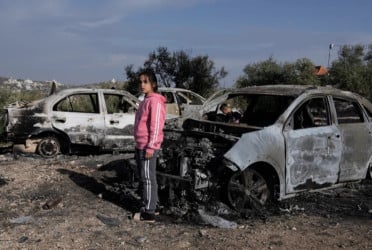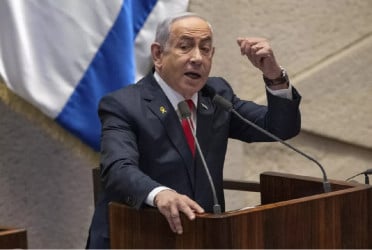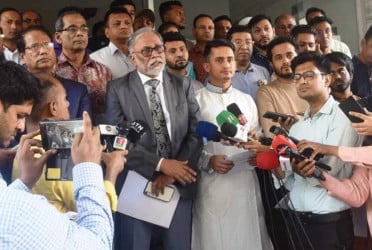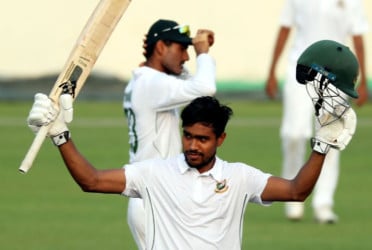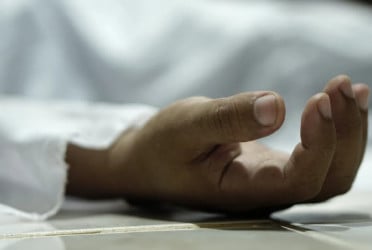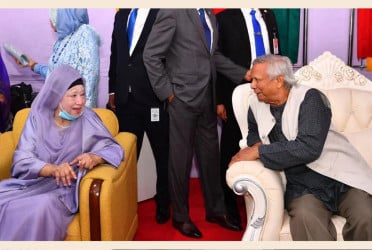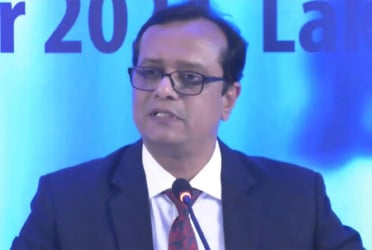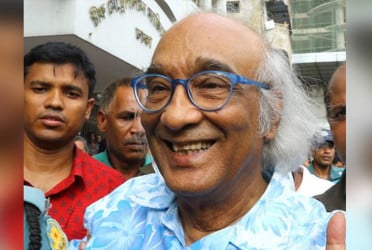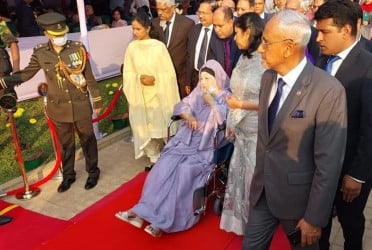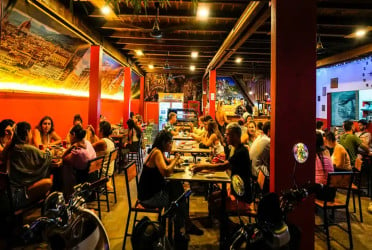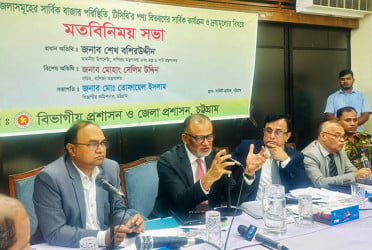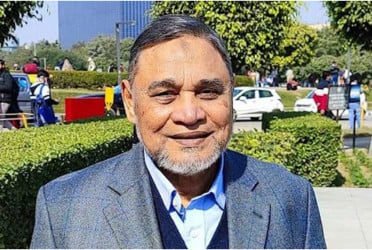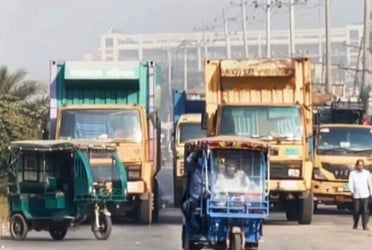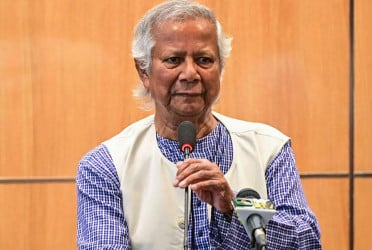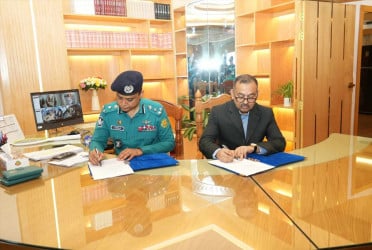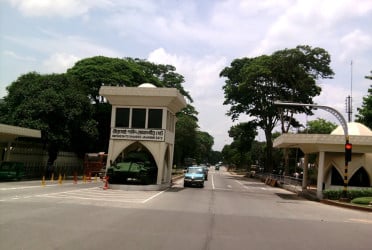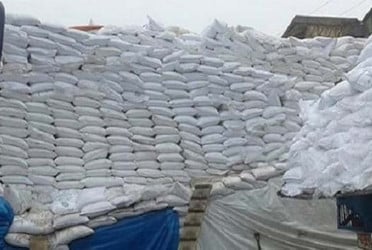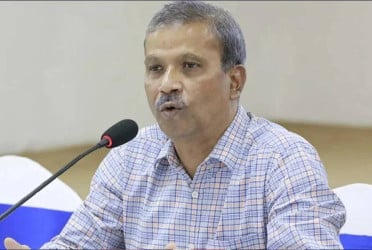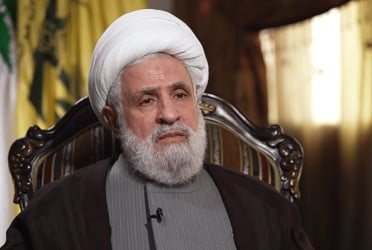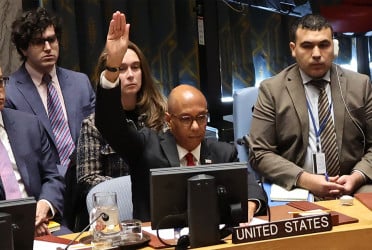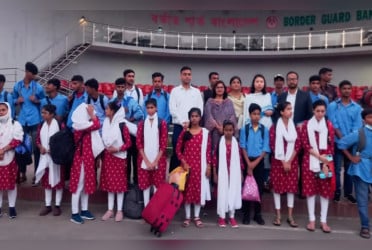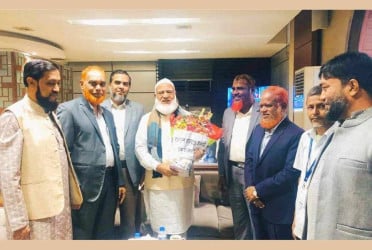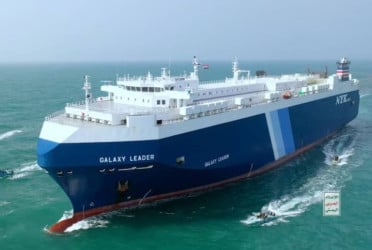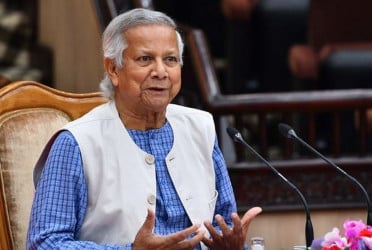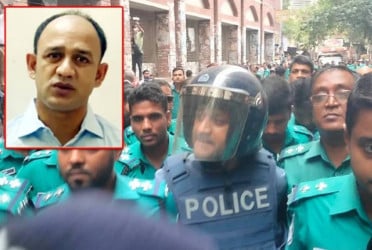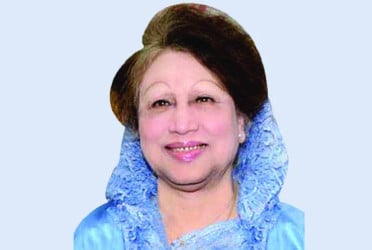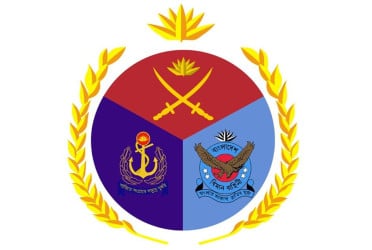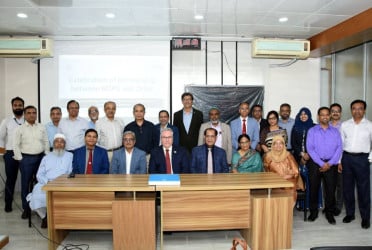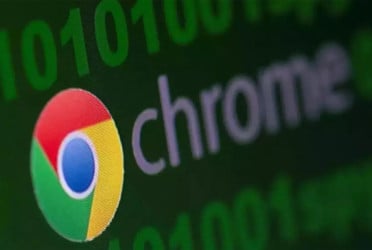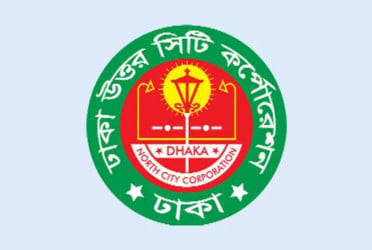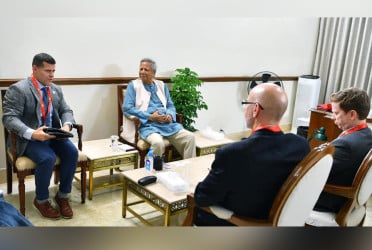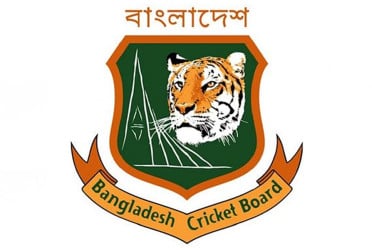The Sheikh Hasina Sharani of Purbachal is the widest and most spectacular road in the country. If the plan were successful, there shouldn’t be any traffic congestion in the 300 feet wide, 14-lane road. However, there was an exception seen on the front part of Australian International School, beside this road. As there’re no own parking facility, a service road of this street has been turned into the parking place of vehicles that are used for carrying the students. Hence, the whole road is occupied by hundreds of vehicles from morning to afternoon and creating irritating traffic jam. It only takes 7 to 8 minutes to pass the 12 kms expressway. However, it takes 30 minutes to one hour to cross just the half-a-kilometer long service road.
From the field visit, it has been seen that The Australian International School is located before the first intersection on the way from Kuril to Kanchan. The Service Road is used for going to the opposite road via intersection, and on this road traffic congestion happens due to personal vehicle parking.
Not only the Australian International School, but more or less traffic jams are being created in front of more than eight hundred schools scattered all over the capital due to unplanned transportation process for students. This traffic jam is affecting the entire road system of the city. More traffic problems are seen up in front of expensive 'elite' schools. Experts say that school-going vehicles account for one-fifth of the capital's traffic congestion. In most cases, a private vehicle has to go down the road four times to take or put down a student. Many of the vehicles are parking on the main road. As a result, the lane is closing. But a school bus can carry at least 50 students. For the same number of students, 50 private cars require 100 to 200 trips. That is, a school bus can be an alternative to 50 private cars. However, due to the lack of zoning system and proper planning in schools, various organizations have failed to introduce school buses widely in the last era.
Hadiuzzaman, professor of civil engineering at Bangladesh University of Engineering and Technology (BUET), told The Bangladesh Pratidin, “According to research data, there are about two-million to two and a half million vehicle ply in Dhaka every day. About 17 percent of these trips are related to educational institutions. If you calculate the travel to the coaching centers, it will be divided by 20. It will reduce a lot if bus services are introduced. However, starting a bus service here will not bring much benefit as the difference in the quality of the schools here is huge. As a result, a parent residing in Motijheel is enrolling the child in Uttara due to get best schooling for children. As a result, these trips are coming to the main road, which is seen nowhere in the world. Again, when the buses will take the students from different places, then the student who will board the bus at the beginning will have to stay on the bus for two to two and a half hours. The parent won’t want to send him to the bus thinking about the long time it needs. Hence, the zoning system introduced so that the child residing in the area should be given priority for admission in the school there. Then he can walk, use rickshaw or school bus. Those trips will also not come on the main road. For this, the standard of education of all schools must be taken closer. This is the responsibility of the Ministry of Education. Why 8-10 schools will be the best in Dhaka?”
Various Initiatives to Launch School Bus: Dhaka Transport Coordinating Board (DTCB) decided to launch school bus service in an inter-ministerial meeting in 2009 to ease traffic congestion in the capital and school students transportations. In the light of that decision, this service was started on January 15, 2011 initially with 14 BRTC buses. Although 100 buses were supposed to be launched later, the service was gradually stopped in 2020. According to BRTC sources, Tk 4, 58, 99, 854 has to be taken as a loan to buy 14 buses launched in 2011. But the money of selling tickets to the students did not cover the cost of running the buses. Daily cost of BRTC is Tk 35, 168 taka, whereas the average income is Tk 12,000. This is why the service is closed.
Meanwhile, in the budget of the fiscal year 2018-19, the then finance minister Abul Mal Abdul Muhith announced tax exemption on the import of school buses. That announcement didn't work either. No school or organization has shown interest in importing school buses. In September 2022, Dhaka North City Corporation (DNCC) Mayor Md. Atiqul Islam announced the launch of bus service for some schools in Gulshan under the management of North City Corporation. The service was supposed to be operational from May last year. At the same time, the mayor announced the evacuation of temporary shops within 500 meters of the school and the closure of parking in the vicinity. However, the initiative didn’t see the light despite the passing of years.
To know about it, the reporter tried to contact Mayor Atiqul Islam, but he wasn’t reached on the phone. However, DNCC Chief Executive Officer Mir Khairul Alam was contacted. He said, “The initiative is still there. Permission not received to buy the buses, but we’re trying. It is not possible to say when it will be launched.”
Meanwhile, the professor of civil engineering department of BUET and transport expert M. Shamsul Haque blamed the school's approving authorities for creating traffic jams in front of the schools. He said the school should be in a planned and quiet area away from the main roads. Here along the main road, in the commercial area, the school shas been approved in even in narrow roads. As a result, there’s traffic jams on that road during school hours. This huge problem isn’t easy to remove. However, if the quality of all schools can be improved and students can be admitted to area-based schools through the zoning system, this suffering will be reduced to some extent. Then the introduction of school buses will also be fruitful.
(The report was published on print and online versions of The Bangladesh Pratidin on February 27 and rewritten in English by Lutful Hoque Khan)

